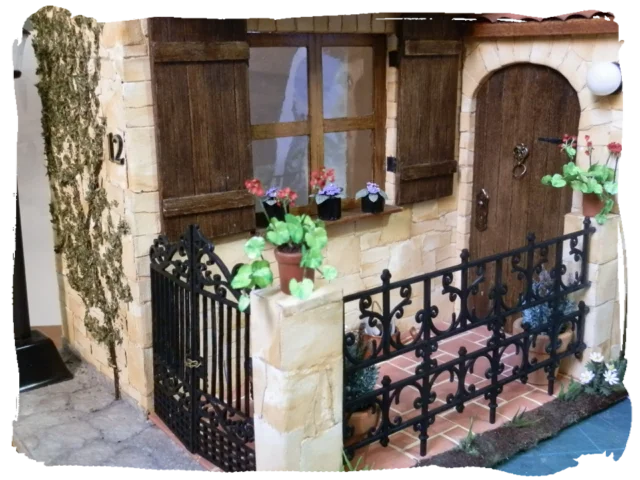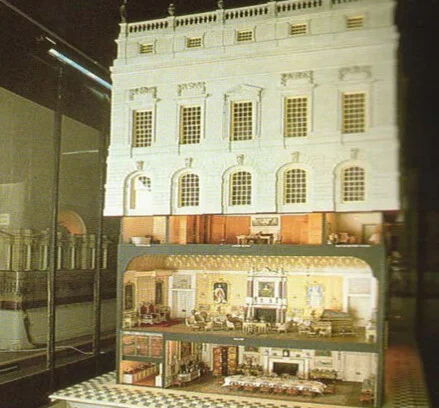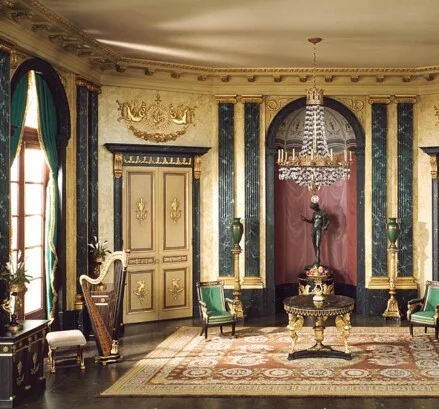ORIGINS
20th CENTURY
SCALES
If you ever go to a miniatures show you will see how this market can be responsible for over US$ 55 millions in sales per year!...
The habit of making and collecting miniatures dates back to pre-historical times. Miniature statues and objects have been found at numerous archaeological sites around the world. Back then they even held a certain magical purpose, almost ritualistic. Between 1600 and 1700, it became a hobby dear among the aristocratic class and the extremely wealthy ones. They took it to an even higher level. They would commission special cabinets to exhibit their most precious collectable miniature items, purchased all over the world and manufactured by the most talented artisans. Each little piece was made with such perfection that no child could even dream of touching them. They were a private treasure to be enjoyed and envied by grown-ups' eyes (and hands) only!
In the first decades of last century a renowned British architect, Sir Edwin Lutyens, was commissioned by members of the royal family to create a very special dollhouse for the Queen, to be presented to the public during the British Empire Exhibition. Over 1,500 artists, craftsmen and manufacturers contributed to this project. It was meant as a gift from the people to the queen, as a showroom of England's finest manufactured products, and as an accurate historical record of how a royal family might have lived during that period in England.
From that moment on, the hobby has been captivating more and more enthusiasts, collectors and amateur miniaturists. More recently, at the dawn of the "Internet era", it has spread its appeal even further, enthralling more new fans literally all over the world.
There are several scales of reduction in the miniature world. The international standard scale for dollhouses nowadays is 1:12, or one foot to one inch, where real world objects are reduced to 1/12th of its original size so that a perfectly proportional miniature can be created! This means that if a real world object is 1 foot in widht or diameter (like a food dish, for example), in a dollhouse it will be only 1 inch in diameter. The reference to imperial units (1:12) holds up even in countries with metric (or scientific) units are used, where 1:10 would have been more intuitive. That is so because the hobby has first reached popularity in England.
Other preeminent hobbies that deal with miniaturization of objects and structures, like those that work with cars, airplanes, ships, trains, buildings, etc, use different scales, being the most common ones 1:10, 1:18, 1:24, 1:48, 1:87 and 1:120. There are miniatures as small as 1:144 (which would be a dollhouse for a dollhouse...) and even 1:160! One often needs magnifying glasses to be able to enjoy them to the fullest!
FAMOUS DOLLHOUSES
Click on the images to visit their websites
PETRONELLA OORTMAN DOLLHOUSE, AMSTERDAN
QUEEN MARY'S DOLLHOUSE
ENGLAND - 1921~1924
THORNE ROOMS
CHICAGO, EUA
Why dollhouse miniatures?

Fascination
Dollhouse miniatures fascinate people of all ages and walks of life. When people see a miniature setting for the first time, it feels like some kind of magic takes over. It's a place of joy and inspiration, where people can "escape" the hardness of reality and explore a new world of infinite possibilities.
A world where everything is possible and anything can happen. A world where the only limit is your imagination. It can be created to depict any given time or era, past, current of future, in detail. The Middle Ages, Renaissance, Roman times, the Victorian Era, Colonial times, Belle Époque, Mid Century, Contemporary, and even imagined future versions of the world. It can be used to replicate your childhood home, or to build your dream home where you want to live someday.
For those who enjoy hands-on crafts, it is a dream come true. As all the crafts techniques are possible and desirable: woodworking, sewing, modeling, sculpting, scrapbooking, embroidering, knitting, building techniques, lightening, painting, etc.
As practical and commercial uses of miniatures, there are architectural mock-ups used to sell new real state ventures, miniature sets for filming and/or publicity. Museums settings in miniature representing past and historical events. The most accurate and realistic they are, in all of those examples, the better.
To know miniatures is to fall in love with them. For good!








